Our head tutor and founder, Sue Searle, visited Sumatra to see wild Orangutans in February 2023. Here is her account of her visit.
As I set out on my jungle trek to see orangutans, I felt a sense of anticipation and excitement. This was my first time trekking through a dense tropical jungle, and I couldn’t wait to witness the beauty of this natural world up close. It didn’t disappoint me – huge canopy trees with buttress roots, dangling lianas, strange bird sounds and chirring cicadas. And, of course, the heat!
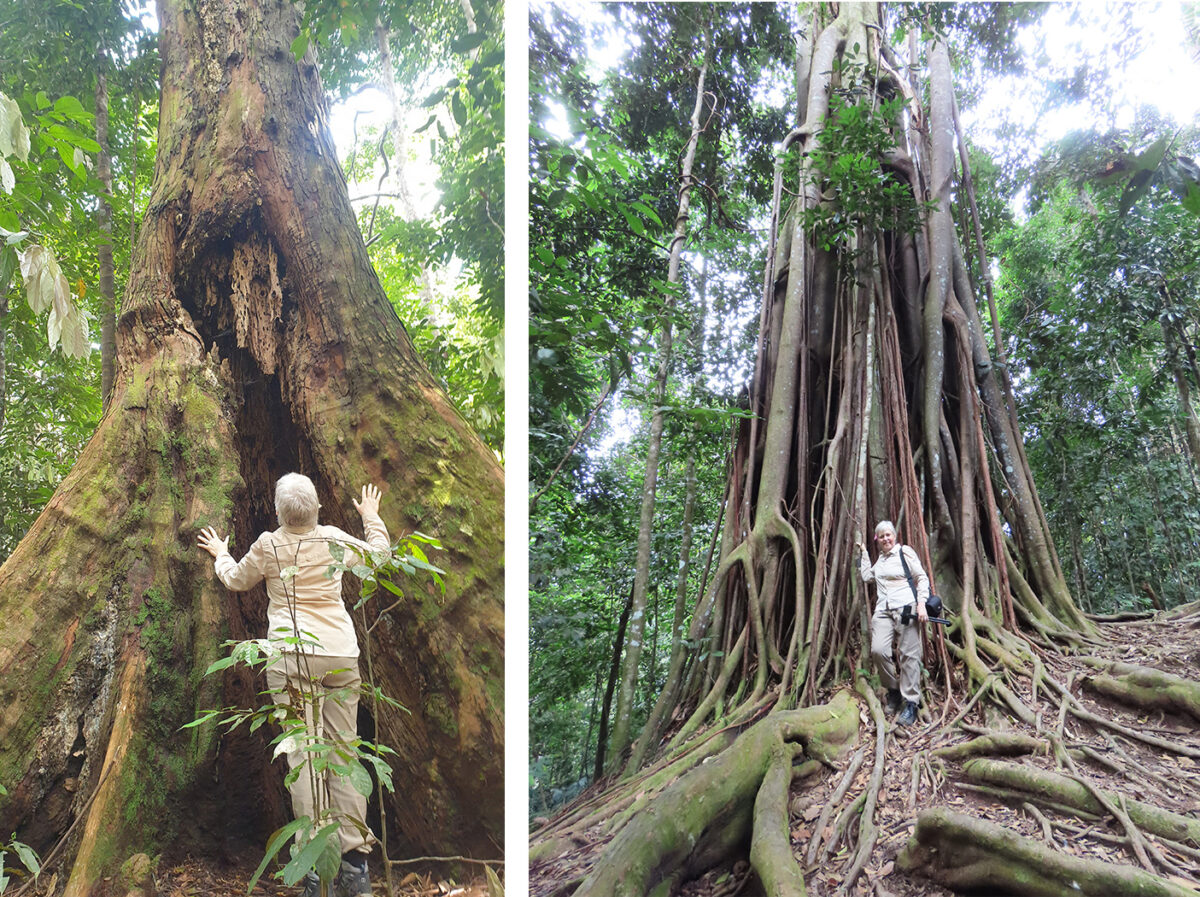
Gunung Leuser National Park
I was in Gunung Leuser National Park, Northern Sumatra. It’s a wildlife lover’s paradise boasting a diverse range of species. ThisNational Park offers a unique opportunity to witness some of the world’s most endangered and fascinating species in their natural habitat. It covers an area of 7,927 km2, five times the size of Greater London. One of the park’s most famous residents is the orangutan (Pongo pygmaeus abelii). These intelligent primates are native to Sumatra and Borneo and are considered a symbol of Indonesia’s biodiversity. The park is also home to several other primate species, including the agile gibbon (Hylobates agilis albibarbis), the macaques (Macaca fascicularis (long-tailed) and Macaca nemestrina (pig-tailed)), and the slow loris (Nycticebus coucang).
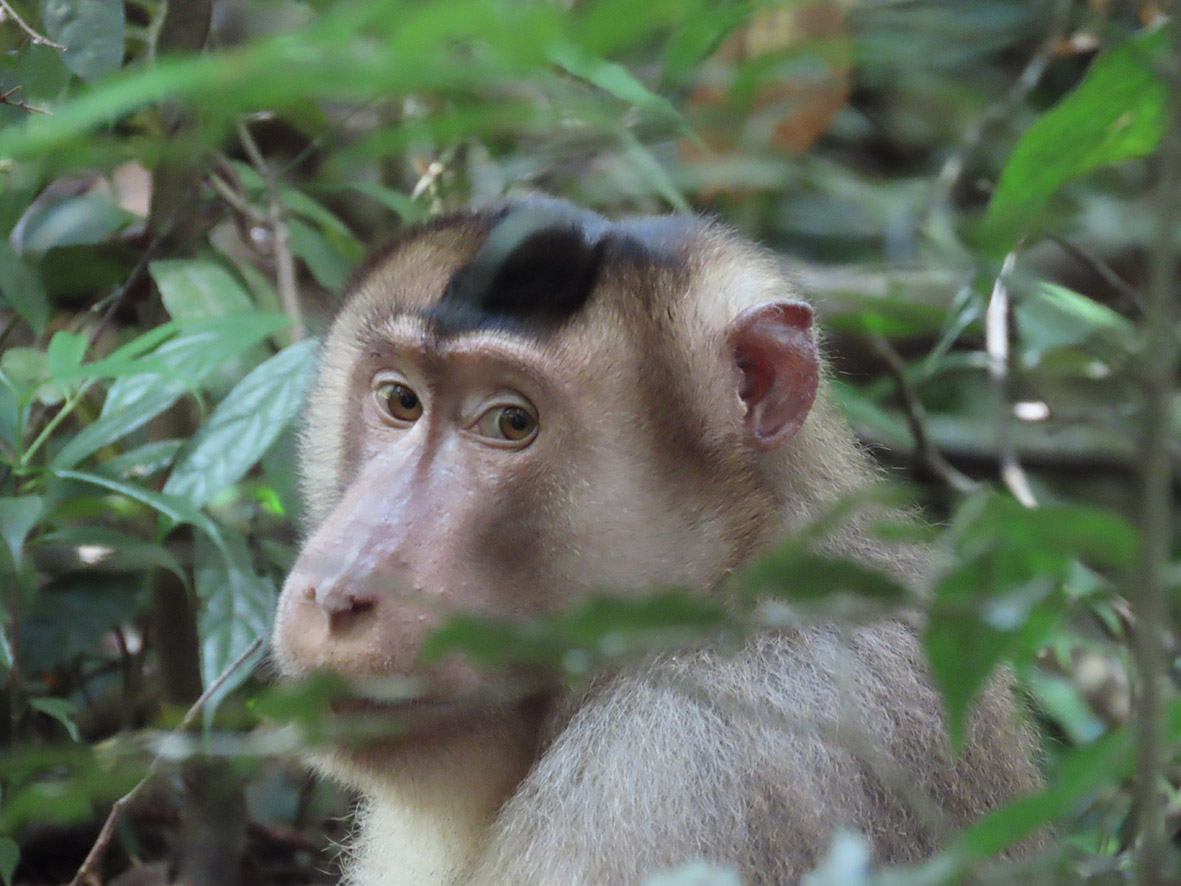
Aside from primates, Gunung Leuser National Park is also home to several large carnivores, including the Sumatran tiger (Panthera tigris sumatrae), the clouded leopard (Neofelis nebulosa), the sun bear (Helarctos malayanus), and civets (Viverricula indica). These predators are essential to the park’s ecosystem, helping maintain balance and preventing prey species’ overpopulation. The park is also home to several species of deer, including the Sambar deer (Rusa unicolor) and the Southern Red Muntjac (Muntiacus muntjak), as well as wild boars (Sus scrofa) and porcupines (Hystrix brachyura). Also present are the Sumatran elephant (Elephas maximus sumatrensis) which is only 5-9 feet tall, and Sumatran Rhinoceros (Dicerorhinus sumatrensis).
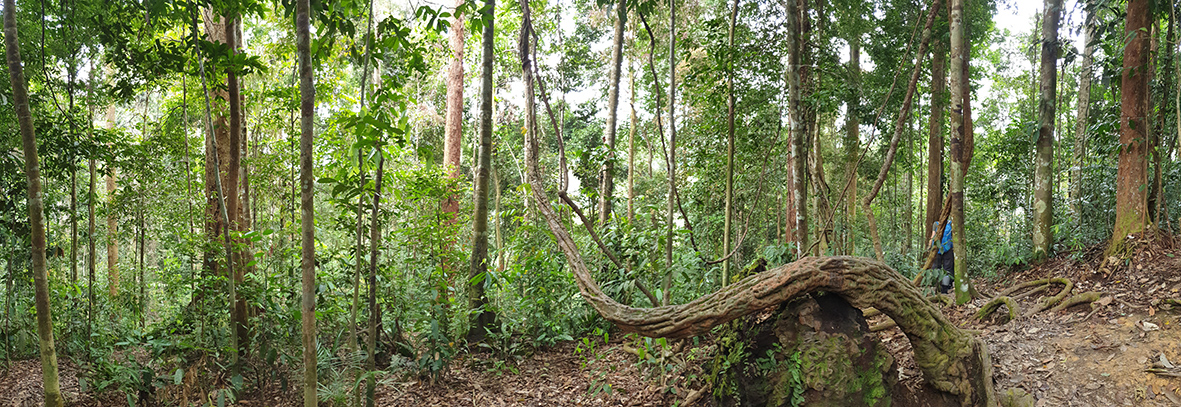
The park’s avian population is equally impressive, with over 300 bird species recorded within its boundaries. The Great Argus (Argusianus argus) was the most impressive bird we saw—a huge bird, like a cross between a pheasant and a peacock, with incredible bark-like camouflage.
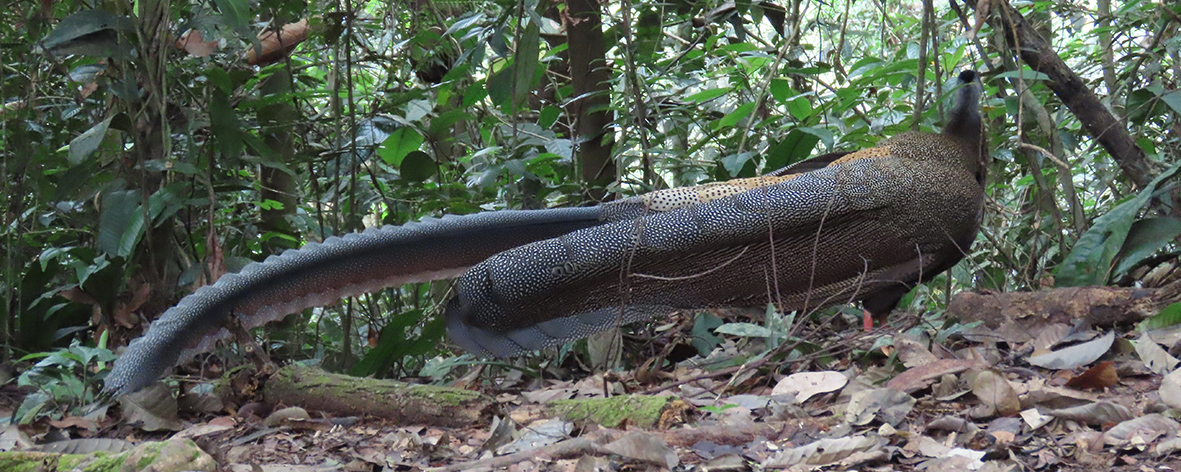
Jungle Trekking
Our group was accompanied by a local guide who was incredibly knowledgeable about the flora and fauna of the jungle. As we hiked deeper into the forest, he pointed out different species of trees and plants, explaining their uses in traditional medicine and everyday life. I was amazed by the sheer diversity of the jungle, from towering trees to intricate vines and colourful flowers.
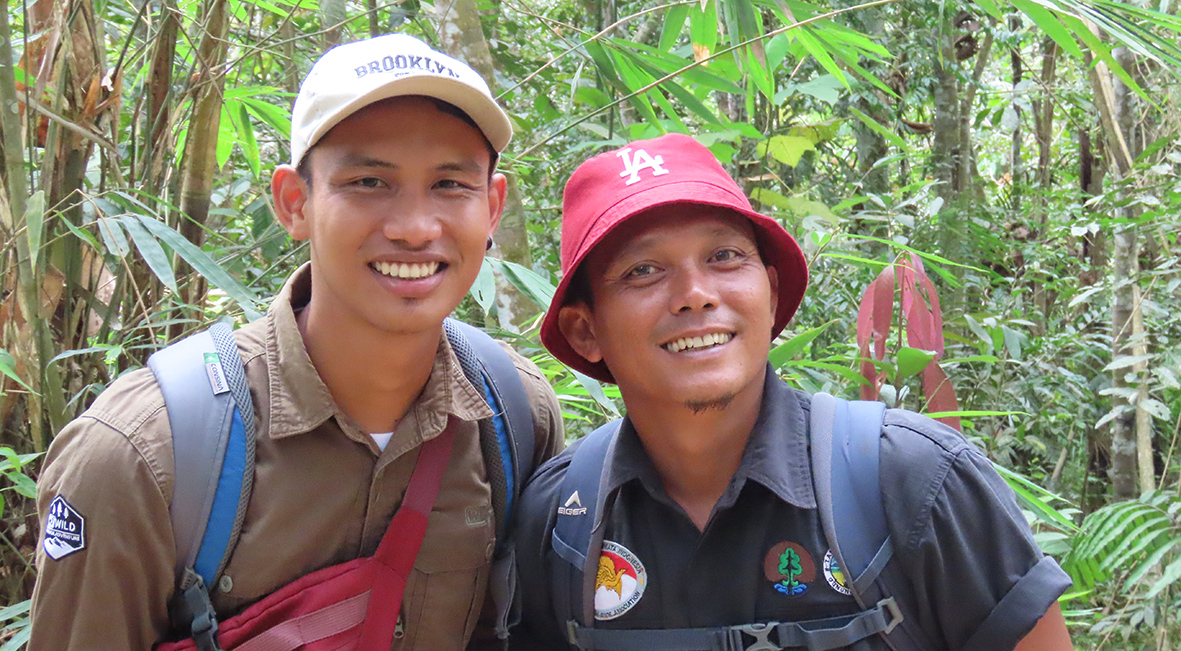
With the help of trackers to find the orangutans, we were able to home in on where they were. We could hear the rustling of leaves and branches above us. Soon enough, we caught our first glimpse of an orangutan sitting in a tree high above our heads. The guide explained that these primates are incredibly intelligent and have a close genetic relationship to humans.
First Orangutan Sightings
I will always remember my first sighting of an orangutan in the wild. As I looked up, I saw a large, bright reddish-orange primate perched high in the canopy. It gazed down at me with deep, intelligent eyes. Our eyes connected for a moment; it was so magical. She had a baby with her who was intent on playing whilst she sat patiently nearby.
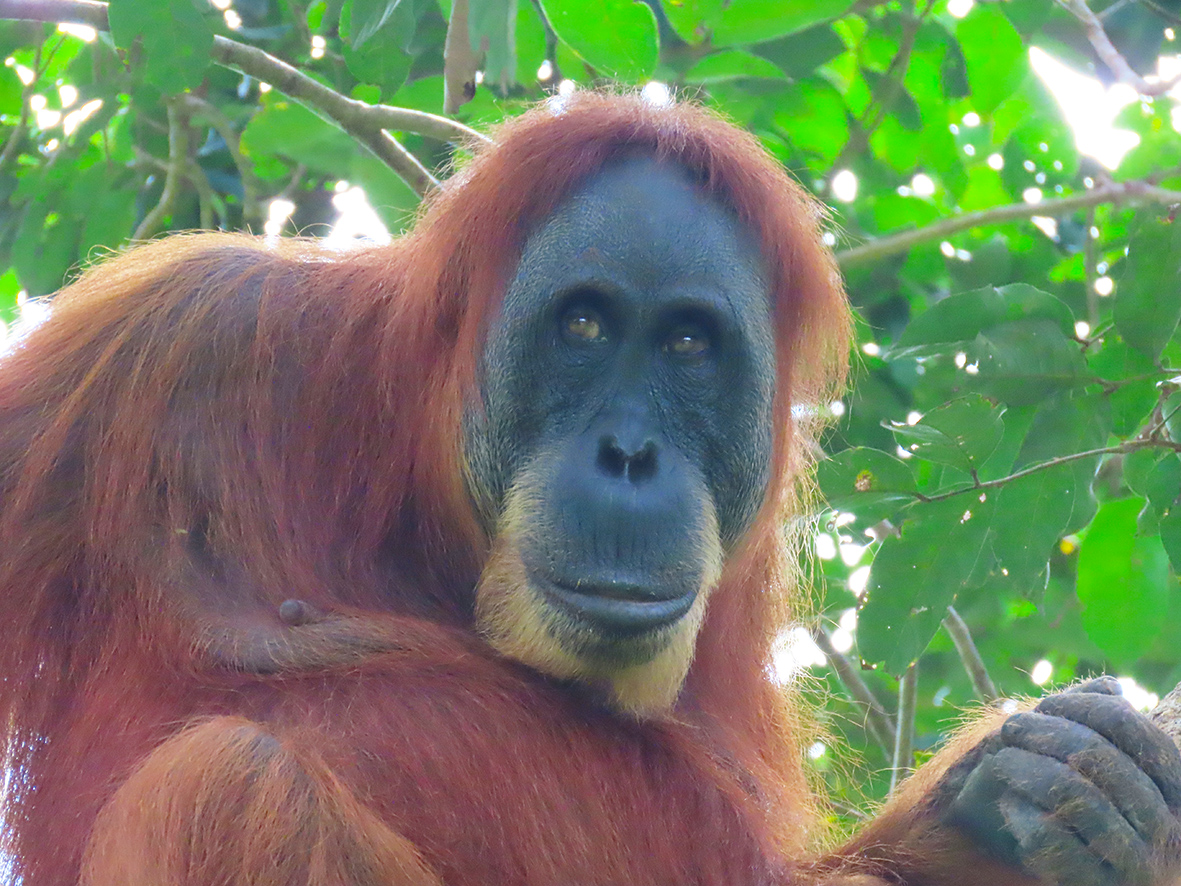
At first, I felt a sense of awe and disbelief that I was seeing an orangutan in the wild. As I watched, the orangutan began to move through the trees with incredible grace and agility. She swung effortlessly from branch to branch with her youngster clinging on tight. I noticed her long, powerful arms, shaggy fur, and gentle yet curious expression. I was surprised by how she blended so seamlessly into the lush surroundings despite it being bright orange against the green of the leaves.
I was struck by her peaceful demeanour and the sense of connection that I felt with this remarkable creature. I was reminded of the importance of conservation efforts to protect these incredible primates and their natural habitats. I feel incredibly grateful to witness them in their native habitat.
We spent several hours observing the orangutans. We managed to find 5 in one day. Mainly females with youngsters. They are solitary, so you usually only see 1-2 at a time.
Orangutan Species
There are two species of orangutan in the world, the Sumatran orangutan (Pongo abelii) and the Bornean orangutan (Pongo pygmaeus). While they share many similarities, the two species have several key differences. One of the most noticeable differences is their appearance. Bornean orangutans have a broader face and a larger jaw than Sumatran orangutans. They also have longer, shaggier hair than their Sumatran counterparts, which helps to keep them warm in their cooler, wetter habitat.
Another significant difference between the two species is their size. Sumatran orangutans are smaller and more slender than Bornean orangutans. Adult males typically weigh between 50 and 61 kg (the size of a small adult human), while adult females weigh between 29.5 and 45 kg (the size of an average ten-year-old child). Bornean orangutans, on the other hand, are larger and more muscular. Adult males can weigh up to 100 kg, while adult females weigh between 33 and 50 kg. They only have young every 6-8 years as it takes that long for the baby to learn all it needs to survive.
Orangutan Conservation
The two species also have different habitats and distributions. Sumatran orangutans are found only on the island of Sumatra in Indonesia, while Bornean orangutans are found on the island of Borneo, which Indonesia, Malaysia, and Brunei share. The two species have adapted to different environments. The Sumatran orangutans live in mountain forests, and the Bornean orangutans live in lowland rainforests. This makes Bornean orangutans more prone to human disturbance and forest removal. While both species are critically endangered due to habitat loss and hunting, conservation efforts are underway to protect these amazing primates and their unique habitats. There are estimated to be around 7,000 in the Gunung Leuser National Park.
Throughout the trek, the guide shared stories and insights about the jungle, its inhabitants, and the ongoing conservation efforts to protect this incredible ecosystem. I learned about the challenges facing the orangutan population, including habitat loss and poaching, and felt inspired by the work done to preserve these remarkable primates for future generations.
Many orphaned orangutans had been rehabilitated back into the wild, and the feeding programmes had now stopped; they were fully integrated and now have young of their own.
Reflection
As we made our way back to Bukit Lawang, where we were staying, the memory of my first sighting of an orangutan returned to me. It inspires me to appreciate even more the wonders of the natural world, especially tropical forests, and share what I have learnt with others. Maybe I will bring some people over here to see the orangutans for themselves.
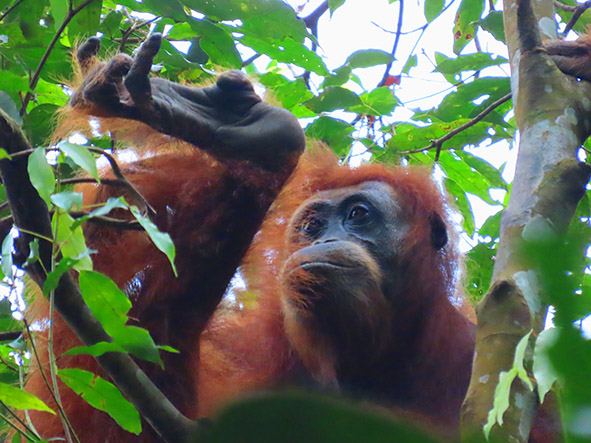
I felt deep gratitude for the opportunity to visit the jungles of Northern Sumatra that the orangutans call home. This experience again brought home the importance of conservation efforts and the need to protect our planet’s precious ecosystems. I am grateful to all the people involved in their conservation and how passionate they are about orangutans and preserving their forest home.
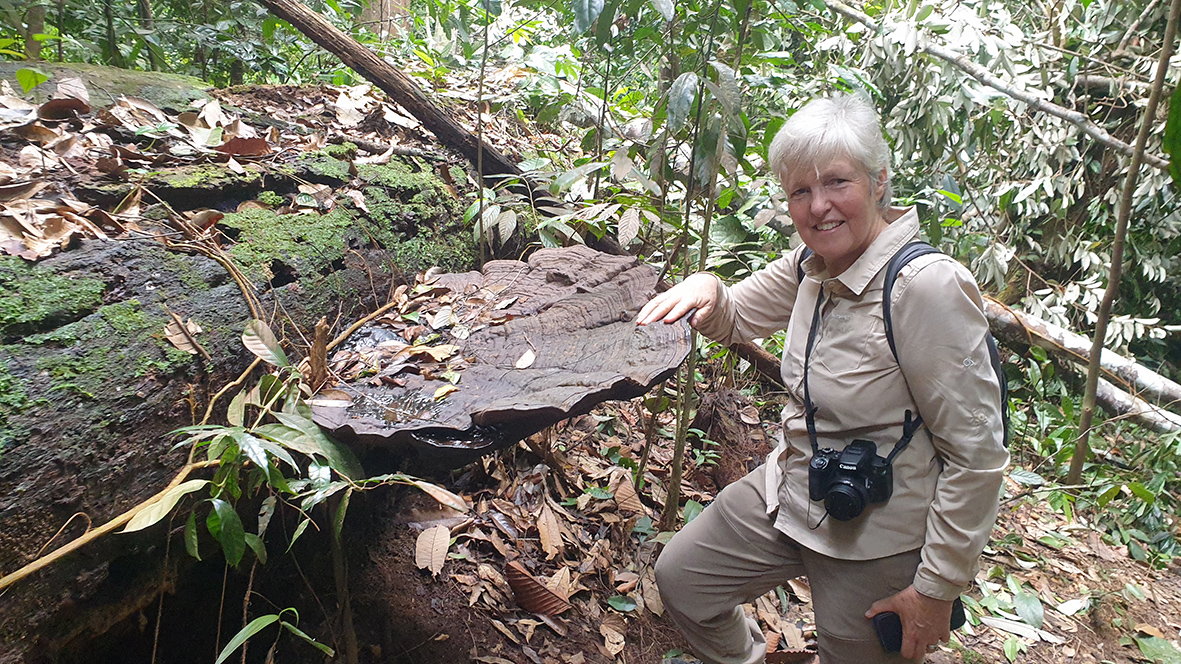
Did you know that Ecology Training UK now has courses for people interested in working towards careers in conservation. CLICK HERE to find out more about our Certificate in Conservation Management or email us on [email protected] if you want some advice on training for conservation careers. We are also organising trips abroad so get in touch if you would like to visit Sumatra to see the Orangutans.



